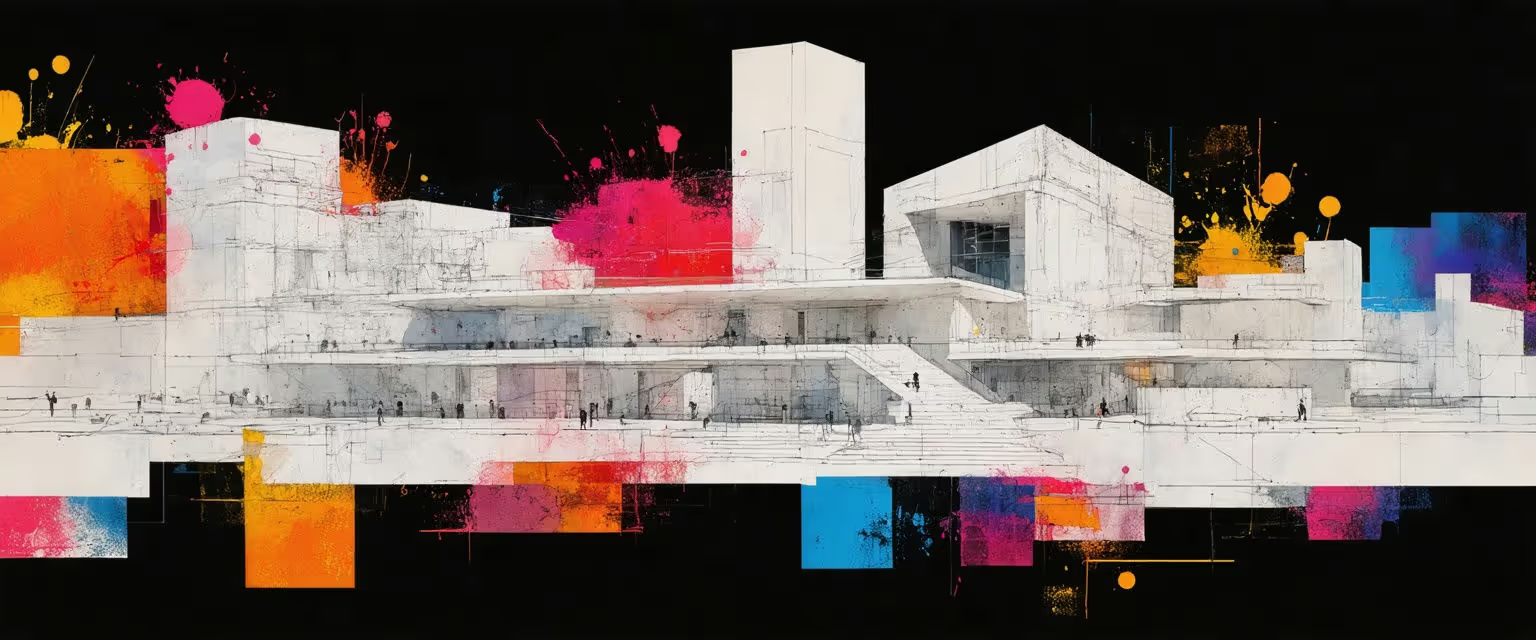All Posts
Construction - AI-Powered Project & Workflow Automation
Harness AI Agents to Optimize Construction Schedules & Specification Alignment

Harness AI to optimize construction schedules & specification alignment. Streamline operations, reduce discrepancies & boost efficiency with cutting-edge AI tools.
Managing construction schedules with inconsistent specifications and detecting mismatches between drawings and physical reality are persistent nightmares for construction professionals. These misalignments, such as when construction finish schedules don't align with specifications, waste time, cause costly rework, and create budget overruns that can destroy project margins.
Understanding how AI agents compare construction finish schedules to specifications and detect drawing discrepancies is crucial for addressing these challenges. By blending AI with established processes, construction firms are boosting efficiency, making smarter decisions, streamlining vendor selection, and tackling these persistent challenges in data management and scheduling.
How AI Agents Compare Construction Finish Schedules to Specifications
Construction Schedule Basics
A construction schedule is your strategic roadmap—a carefully crafted timeline of activities, milestones, and deliverables that make up your project. Once construction begins, the schedule becomes a living document representing the best path to completion while accounting for real-world obstacles like weather, differing site conditions, supply chain constraints, and labor availability.
A well-developed schedule offers several critical benefits to construction projects:
- Time optimization: Streamlines project activities for efficient time management
- Resource management: Accurately allocates labor, equipment, and materials
- Budget control: Minimizes rework risks by ensuring proper work sequencing
- Stakeholder communication: Facilitates clear communication between all project participants
- Risk mitigation: Enables proactive identification of potential issues
- Safety improvement: Prevents trade-stacking and rushed projects that can lead to hazardous conditions
Finish schedules specifically detail what materials and finishes will be used in a project. They align with the structure of 3-Part Specifications, which serve as comprehensive frameworks for the construction team—like recipe books for building projects. These specifications typically include:
- Part 1: General - Outlining overall requirements and conditions
- Part 2: Products - Where the Finish Schedule resides, detailing materials and products
- Part 3: Execution - Describing how specified products should be installed
Comparing construction finish schedules to specifications is essential for:
- Cost estimation and material quantity calculations
- Centralizing documentation of finish tags for construction drawings
- Creating checklists to track missing specifications
- Providing comprehensive guidelines for project execution
The Role of AI Agents in Scheduling
AI and machine learning technologies are changing construction scheduling by offering sophisticated tools that enhance efficiency and accuracy. These advanced systems provide numerous benefits:
- Data Analysis and Integration: AI tools collect, process, and integrate large amounts of data from various sources to create accurate pictures of project status and progress
- Risk Management: By analyzing patterns and historical data, AI can identify potential scheduling risks, recommend mitigation strategies, and enhance forecasting accuracy
- Scenario Planning: These technologies generate and compare multiple scheduling scenarios, suggesting optimal approaches based on project goals
- Communication Enhancement: AI facilitates stakeholder communication through real-time updates and automated reporting
Understanding how AI agents compare construction finish schedules to specifications is essential for modern construction management, as it helps streamline project management, reducing rework and keeping projects on track.
The integration of AI in construction scheduling represents a significant advancement in how projects are planned and executed, offering unprecedented levels of precision, adaptability, and efficiency that traditional methods simply cannot match.
How AI Agents Detect Drawing Discrepancies in Construction
In construction, technical drawings serve as the foundational blueprint for turning design concepts into physical reality. Discrepancies in these drawings can lead to costly errors, project delays, and safety issues if not caught early. AI agents are changing how the industry identifies and resolves these issues, offering unprecedented accuracy and efficiency.
Technical Drawings in Construction
Technical drawings in construction encompass a vast array of detailed documents—from architectural plans and engineering specifications to mechanical layouts and electrical schematics. These drawings communicate critical information between designers, engineers, contractors, and other stakeholders throughout the construction process.
Traditionally, detecting discrepancies across these drawings required painstaking manual review by experienced professionals—a process both time-consuming and prone to human error. Even skilled contractors might miss critical details when working with extensive documentation, potentially leading to significant problems during construction.
AI technologies have evolved to address these challenges through sophisticated computer vision and machine learning algorithms specifically designed for technical document analysis, thereby streamlining construction workflows.
AI Capabilities in Discrepancy Detection
Modern AI systems can now:
- Automatically detect and label critical elements in technical drawings such as walls, doors, windows, rooms, dimensions, and materials
- Use Optical Character Recognition (OCR) to identify textual data, including dimensions and material specifications
- Associate extracted information with relevant architectural components
- Recognize symbols and structural elements that traditionally required manual markup
- Identify relationships between components based on their spatial configurations
These capabilities enable AI to quickly pinpoint discrepancies that might otherwise go unnoticed. For example, if wall dimensions differ between architectural and structural drawings, or if a mechanical system conflicts with structural elements, AI can flag these issues for review.
The practical applications are substantial. Machine learning helps construction teams identify potential mistakes and omissions in designs before breaking ground, saving substantial time and resources previously spent on error identification during construction. This technology allows professionals to focus on solving complex problems rather than tedious document review.
For quality control during construction, AI-powered cameras, drones, and sensors continuously monitor sites, capturing images and data in real-time. Advanced image recognition technology analyzes this data to detect deviations from project specifications, ensuring that the physical construction matches the intended design. By utilizing predictive analytics in construction, AI can identify issues before they become costly problems.
The implications for stakeholders across the construction ecosystem are significant:
- For architects and designers, AI serves as a powerful validation tool that enhances quality control while freeing up time for creative problem-solving.
- For contractors and subcontractors, AI facilitates better alignment on scopes and early detection of potential conflicts, reducing rework and schedule delays.
- For project owners, the technology minimizes risk by identifying potential issues before they impact budgets or timelines, delivering higher quality finished projects.
As these AI systems continue to learn from vast datasets of annotated images and construction documents, their ability to detect increasingly subtle discrepancies will only improve, transforming quality control in construction from a reactive process to a proactive one.
AI systems can also analyze historical project data and real-time information to identify patterns and trends, allowing project managers to make proactive, strategic decisions. This AI in data management replaces gut feelings with actionable insights.
These smart systems align labor allocation with project needs, preventing both overstaffing and underutilization through smart resource allocation. By automating routine tasks and optimizing construction task assignments, AI lets construction professionals focus on higher-value activities.
How Agentic AI Simplifies Construction Specification Alignment
Agentic AI is transforming construction project management by automating complex, time-consuming tasks that traditionally consume valuable hours. As a project manager handling multiple responsibilities, you can use this technology to focus on what truly matters: delivering successful projects and maintaining client relationships.
Seamless System Integration
Datagrid's platform offers powerful integration capabilities with over 100 pre-built connectors supporting both structured and unstructured data sources. For construction professionals, this means you can connect your core software systems, including:
- Autodesk BIM 360 and PlanGrid
- Oracle Primavera P6
- Microsoft SharePoint and Project
- Sage and other financial systems
- Smartsheet and Box Drive
This comprehensive integration allows information to flow seamlessly between your systems, eliminating manual data entry and reducing communication gaps that often lead to costly errors and delays.
Automating Document Management Workflows
Construction is notoriously document-heavy, with RFPs, submittals, change orders, and daily reports requiring careful tracking and processing. By automating document management through AI, you can dramatically streamline workflows.
Datagrid's AI agents can:
- Analyze incoming documents and extract critical information
- Route documents to appropriate team members for review and action
- Compare construction finish schedules against specifications
- Detect discrepancies in project drawings and diagrams
- Digitize PDFs and legacy documentation for easier access and analysis
This automation significantly reduces manual workload while improving document accuracy and accelerating project timelines.
Enhancing Project Monitoring and Compliance
Beyond document management, AI agents can continuously monitor project data across systems to provide valuable insights and ensure compliance:
- Track permit status updates and deadline requirements across jurisdictions
- Monitor safety incident reports and equipment certifications
- Generate automated progress reports by analyzing daily reports and schedule updates
- Identify potential delays before they impact the critical path
- Ensure regulatory compliance by flagging issues requiring attention
By implementing Datagrid's agentic AI solutions, you can transform your operations, allowing your team to focus on strategic decision-making and client relationships while routine documentation and monitoring tasks are handled automatically. The result is increased efficiency, reduced errors, and improved project outcomes in an increasingly competitive market.
Simplify Construction Schedule Management with Agentic AI
Ready to revolutionize your construction project management with AI-powered automation? Datagrid is your solution for:
- Seamless integration across all major construction platforms (Procore, PlanGrid, BIM 360)
- AI-driven RFP analysis and bid management
- Automated submittal and change order processing
- Real-time project insights and schedule optimization
See how Datagrid can help you increase process efficiency.
Create a free Datagrid account












